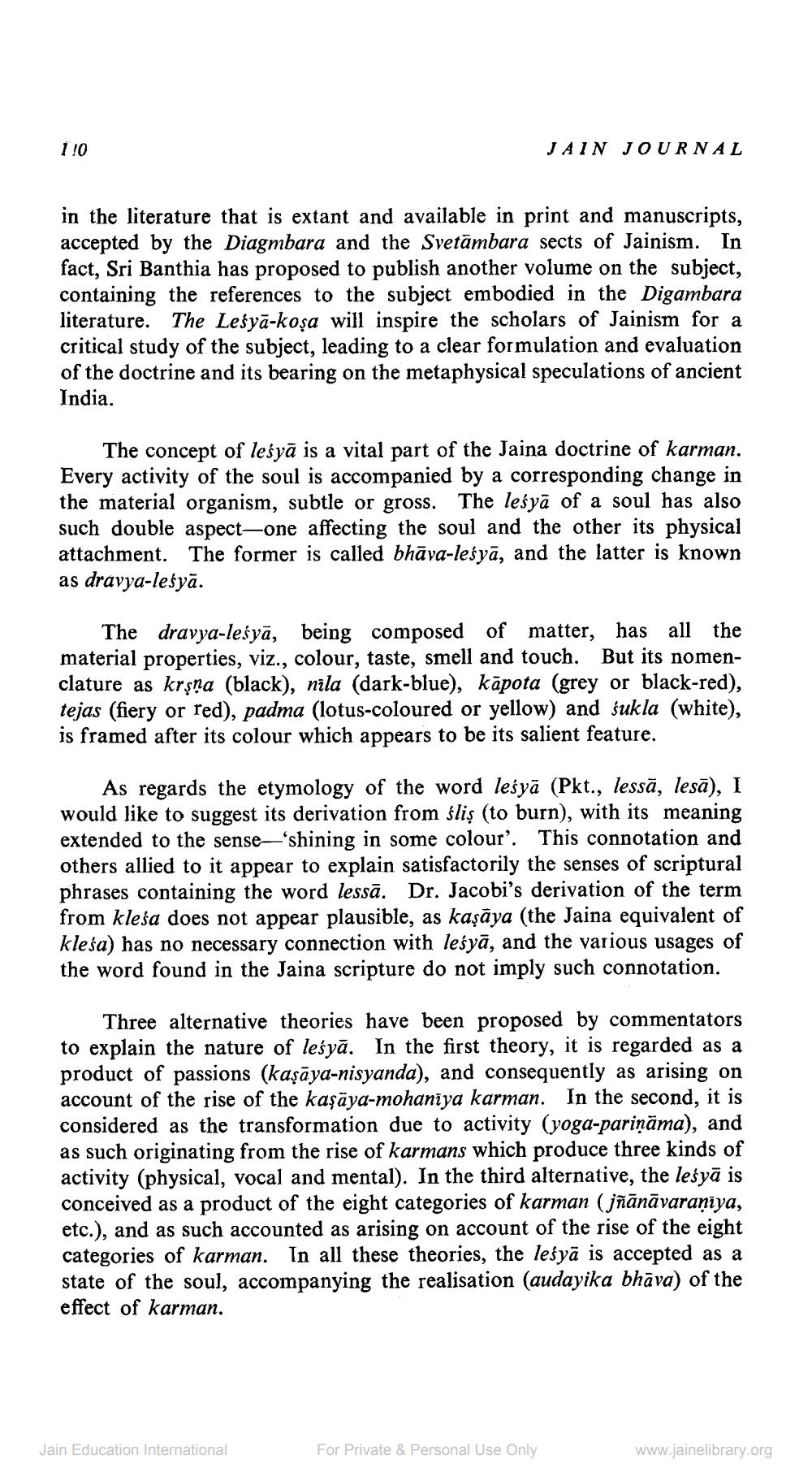Book Title: Jain Journal 1969 10 Author(s): Jain Bhawan Publication Publisher: Jain Bhawan Publication View full book textPage 8
________________ 1!0 JAIN JOURNAL in the literature that is extant and available in print and manuscripts, accepted by the Diagnbara and the Svetambara sects of Jainism. In fact, Sri Banthia has proposed to publish another volume on the subject, containing the references to the subject embodied in the Digambara literature. The Leśyā-koșa will inspire the scholars of Jainism for a critical study of the subject, leading to a clear formulation and evaluation of the doctrine and its bearing on the metaphysical speculations of ancient India. The concept of leśyā is a vital part of the Jaina doctrine of karman. Every activity of the soul is accompanied by a corresponding change in the material organism, subtle or gross. The leśyā of a soul has also such double aspect—one affecting the soul and the other its physical attachment. The former is called bhāva-leśyā, and the latter is known as dravya-leśyā. The dravya-leśyā, being composed of matter, has all the material properties, viz., colour, taste, smell and touch. But its nomenclature as krşņa (black), nila (dark-blue), kāpota (grey or black-red), tejas (fiery or red), padma (lotus-coloured or yellow) and śukla (white), is framed after its colour which appears to be its salient feature. As regards the etymology of the word lesyä (Pkt., lessä, lesā), I would like to suggest its derivation from śliş (to burn), with its meaning extended to the sense— shining in some colour'. This connotation and others allied to it appear to explain satisfactorily the senses of scriptural phrases containing the word lessā. Dr. Jacobi's derivation of the term from kleša does not appear plausible, as kaṣāya (the Jaina equivalent of klesa) has no necessary connection with leśyā, and the various usages of the word found in the Jaina scripture do not imply such connotation. Three alternative theories have been proposed by commentators to explain the nature of leśyā. In the first theory, it is regarded as a product of passions (kaşāya-nisyanda), and consequently as arising on account of the rise of the kaşāya-mohanīya karman. In the second, it is considered as the transformation due to activity (yoga-pariņāma), and as such originating from the rise of karmans which produce three kinds of activity (physical, vocal and mental). In the third alternative, the leśyā is conceived as a product of the eight categories of karman (jñānāvaraṇīya, etc.), and as such accounted as arising on account of the rise of the eight categories of karman. In all these theories, the leśyā is accepted as a state of the soul, accompanying the realisation (audayika bhāva) of the effect of karman, Jain Education International For Private & Personal Use Only www.jainelibrary.orgPage Navigation
1 ... 6 7 8 9 10 11 12 13 14 15 16 17 18 19 20 21 22 23 24 25 26 27 28 29 30 31 32 33 34 35 36 37 38 39 40 41 42 43 44 45 46 47 48 49 50 51 52 53 54 55 56 57 58 59 60 61 62 63 64
